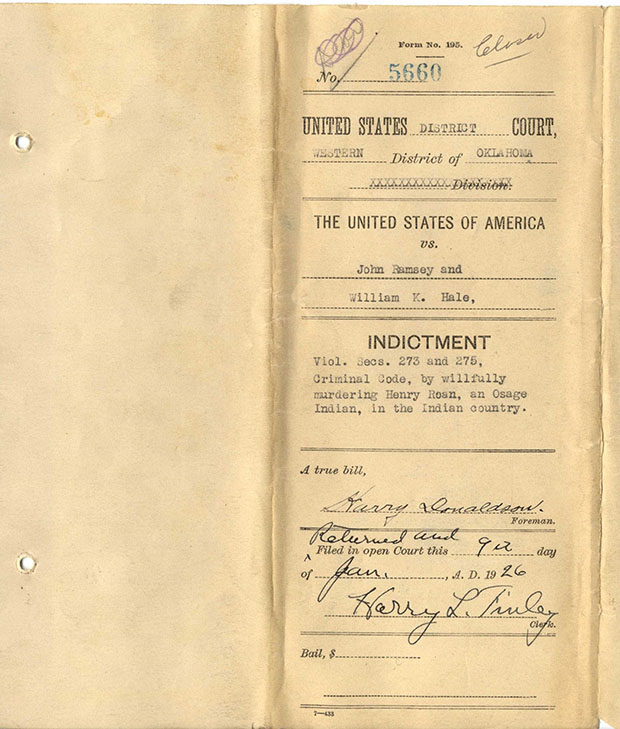
National Archives Records Lay Foundation for Book and Major Motion Picture
By Kristin Phillips | National Archives News
WASHINGTON, February 5, 2024 – For his bestselling book Killers of the Flower Moon: The Osage Murders and the Birth of the FBI, author David Grann relied on National Archives records to tell the harrowing story of a series of murders in the Osage nation in Oklahoma in the 1920s.
The motion picture based on the book was released in October 2023 and has been nominated for 10 Academy Awards.
Grann’s research at the regional archives in Fort Worth and Kansas City was critical to his story. For nearly five years, Grann and his team researched files relating to the Osage Tribe, including guardianship, probate, and criminal case records. These records from the Department of the Interior, Bureau of Indian Affairs, U.S. Court of Appeals, and U.S. District Courts are all stored in the National Archives’ field offices.
“During a recent CBS 60 Minutes interview, Grann highlighted the moment he realized the importance of the Register of Guardians, 1919–1924,” said Michael Wright, Director of Archival Operations at the National Archives at Fort Worth. “The ledger is a handwritten record of the names of guardians of minor and ‘incompetent’ Osages.”
In his book, Grann explained the prevalence of guardianship in Osage country, stating that guardians were “assigned to any American Indians whom the Department of the Interior deemed ‘incompetent.’” Guardians often used the system to their own advantage “to swindle the very people they were ostensibly protecting.”
Records in the National Archives’ holdings included the arrests, trials, and subsequent incarceration of William Hale and John Ramsey for their involvement in the Osage murders. Materials relating to the “Reign of Terror” caused by Hale and Ramsey in the 1920s can be found in Criminal Case 3778: U.S. v. John Ramsey, Criminal Case 2900: U.S. v. William K. Hale, Criminal Case 5659: U.S. v. William K. Hale and John Ramsey, and Criminal Case 5660: U.S. v. John Ramsey and William K. Hale. The Notorious Offender Files, 1919–1975, contain the records pertaining to Inmate #26,518 (Hale) and Inmate #26,519 (Ramsey).
“Sometimes original research leads to the discovery of interesting side stories,” said Jake Ersland, Director of Archival Operations at the National Archives at Kansas City. “In this instance, we found that while Thomas Bruce White [one of the undercover Federal Bureau of Investigation agents] was later serving as warden of Leavenworth Federal Penitentiary, two inmates were serving sentences for the murder of his brother, John Dudley White. [Inmate Case Files, July 3, 1895–November 5, 1957]”
In a 2017 interview published in Prologue: Quarterly of the National Archives, Grann stated, “I could not have written this book without the amazing holdings at the National Archives, where I spent hours upon hours researching this largely forgotten chapter in American history. There were so many surprising documents. . . . Often I would spend several days going through boxes, not finding anything relevant, and then open up a folder to discover something astonishing, like the secret grand jury testimony [that investigated the Osage murders].”
Additional records related to the Osage murders can be found in Individual Indian Guardianship Files, Register of Guardians, and Probate Files and Council Minutes and Proceedings of the Osage Tribal Council. These records are held by the National Archives at Fort Worth and some have been digitized and are available in the National Archives Catalog.
